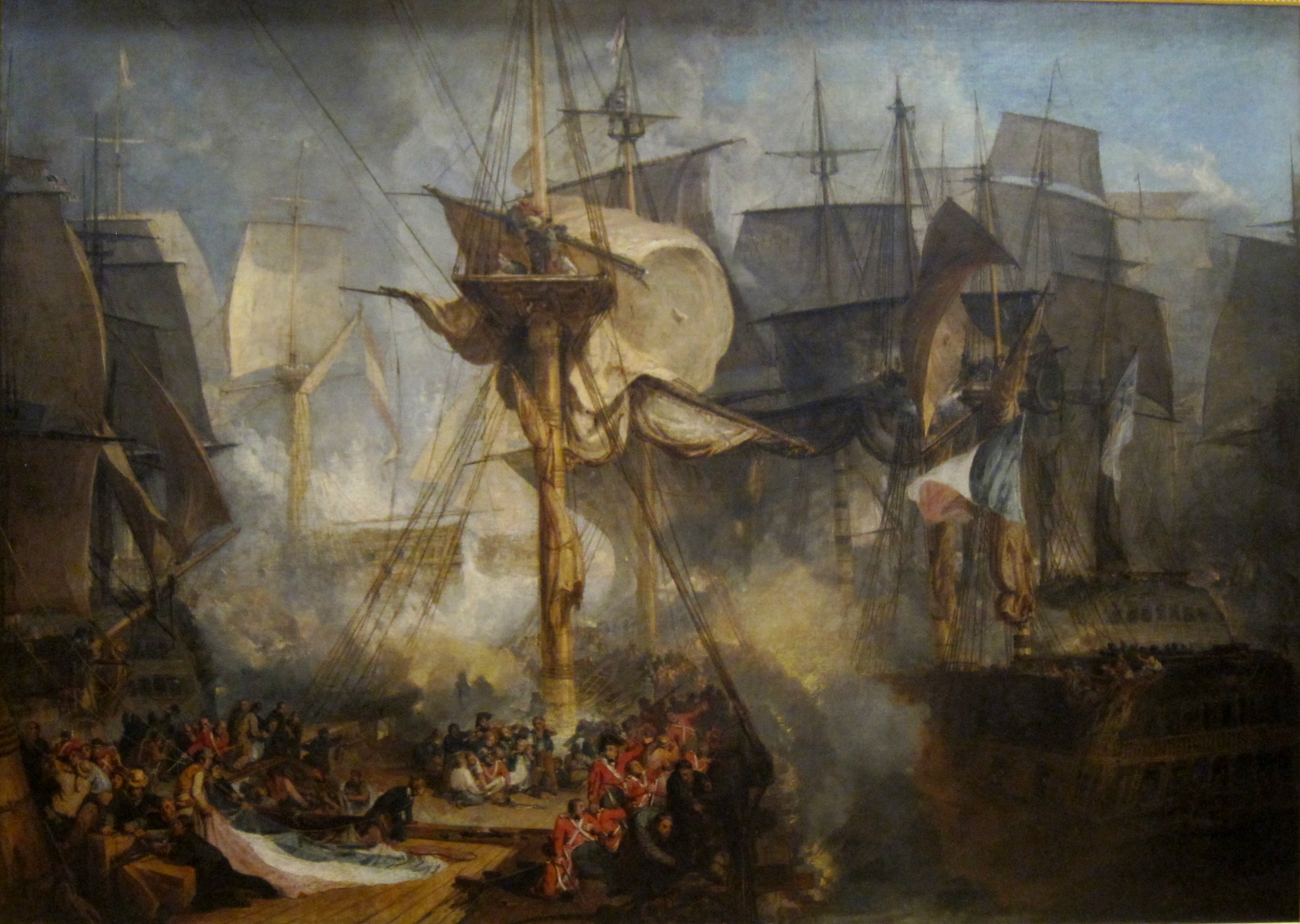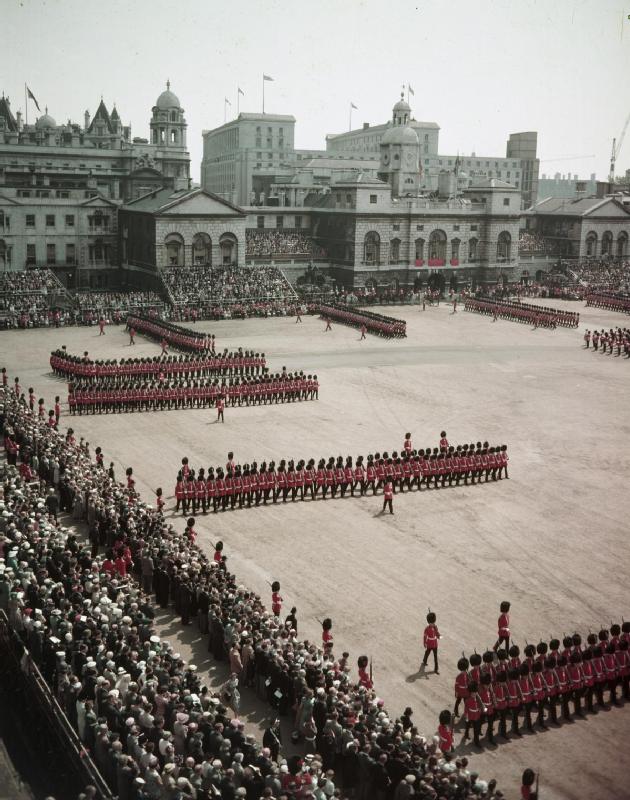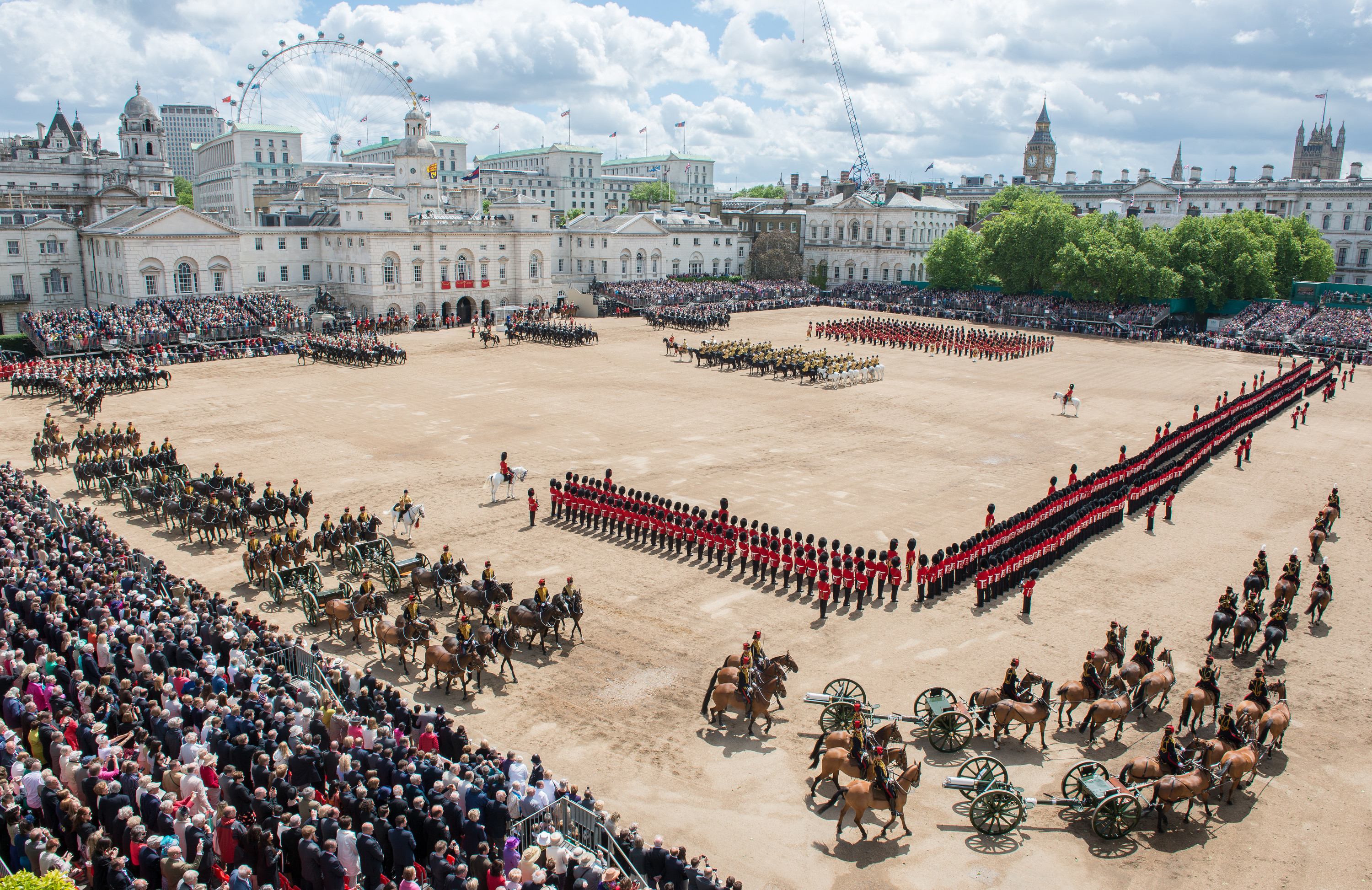|
1805 In The United Kingdom
Events from the year 1805 in the United Kingdom. This is the year of the Battle of Trafalgar. Incumbents * Monarch – George III * Prime Minister – William Pitt the Younger (Tory) * Foreign Secretary – Dudley Ryder, 1st Earl of Harrowby (until 11 January) Henry Phipps, 1st Earl of Mulgrave (from 11 January) * Parliament – 2nd Events * 20 January – London Docks open. * 5 February – East Indiaman ''Earl of Abergavenny'' is wrecked in Weymouth Bay with the loss of 263 lives. * 21 February – Charles Manners-Sutton confirmed as Archbishop of Canterbury. * 18 April – Ordnance Survey begins systematic publication of its ''General Survey of England and Wales'' ("Old Series") maps to a scale of one inch to the mile (1:63,360) with those for Essex. * 4 June – the first Trooping the Colour ceremony at the Horse Guards Parade in London. * 3 August – the annual cricket match between Eton College and Harrow School is played for the first time. * 21 October ** Napoleon ... [...More Info...] [...Related Items...] OR: [Wikipedia] [Google] [Baidu] |
1805 English Cricket Season
1805 was the 19th season of cricket in England since the foundation of Marylebone Cricket Club (MCC). Lord Frederick Beauclerk became the first batting (cricket), batsman known to have scored two century (cricket), centuries in the same season. Honours * Most runsNote that scorecards created in the first quarter of the 19th century are not necessarily accurate or complete; therefore any summary of runs, wickets or catches can only represent the known totals and computation of averages is ineffectual. – Lord Frederick Beauclerk 468 (HS 129not out, *) * Most wickets – William Lambert (cricketer, born 1779), William Lambert 20 Events * Lord Frederick Beauclerk became the first batting (cricket), batsman known to have scored two first-class centuries in a season when he made 129* for Hampshire county cricket teams, Hampshire v Non-international England cricket teams, All-England in July and 102 for All-England v Surrey county cricket teams, Surrey in August. * In what was the fir ... [...More Info...] [...Related Items...] OR: [Wikipedia] [Google] [Baidu] |
Charles Manners-Sutton
Charles Manners-Sutton (17 February 1755 – 21 July 1828; called Charles Manners before 1762) was a bishop in the Church of England who served as Archbishop of Canterbury from 1805 to 1828. Life Manners-Sutton was the fourth son of Lord George Manners-Sutton (third son of John Manners, 3rd Duke of Rutland) and his wife Diana Chaplin, daughter of Thomas Chaplin. His younger brother was Thomas Manners-Sutton, 1st Baron Manners, Lord Chancellor of Ireland. His father, Lord George, had assumed the additional surname of Sutton in 1762 on inheriting – from his elder brother Lord Robert – the estates of their maternal grandfather Robert Sutton, 2nd Baron Lexinton. Manners-Sutton was educated at Charterhouse School and Emmanuel College, Cambridge (matriculated 1773, graduated B.A. as 15th wrangler 1777, M.A. 1780, D.D. 1792). He married at age 23, and probably eloped with, his cousin Mary Thoroton, daughter of Thomas Thoroton and his wife Mary (Levett) Thoroton of Screveton ... [...More Info...] [...Related Items...] OR: [Wikipedia] [Google] [Baidu] |
Hebburn
Hebburn is a town in the metropolitan county of Tyne and Wear, England. It governed under the borough of South Tyneside; formerly governed under the county of Durham until 1974 with its own urban district from 1894 until 1974. It is on the south bank of the River Tyne between Gateshead and Jarrow and opposite Wallsend and Walker. The population of Hebburn was 18,808 in 2001, History In Saxon times Hebburn was a small fishing hamlet upon the river Tyne. It is thought that the name Hebburn may be derived from the Old English terms, ''heah'' meaning "high", and ''byrgen'' meaning a "burial mound", though it could also mean ''the high place beside the water''. The first record of Hebburn mentions a settlement of fishermen's huts in the 8th century, which were burned by the Vikings. In the 14th century the landscape was dominated by a peel tower. A wall, a portion of which still remains at St. John's Church, could also be seen. The Lordship of the Manor of Hebburn passed throug ... [...More Info...] [...Related Items...] OR: [Wikipedia] [Google] [Baidu] |
Horatio Nelson
Vice-Admiral Horatio Nelson, 1st Viscount Nelson, 1st Duke of Bronte (29 September 1758 – 21 October 1805) was a British flag officer in the Royal Navy. His inspirational leadership, grasp of strategy, and unconventional tactics brought about a number of decisive British naval victories during the French Revolutionary and Napoleonic Wars. He is widely regarded as one of the greatest naval commanders in history. Nelson was born into a moderately prosperous Norfolk family and joined the navy through the influence of his uncle, Maurice Suckling, a high-ranking naval officer. Nelson rose rapidly through the ranks and served with leading naval commanders of the period before obtaining his own command at the age of 20, in 1778. He developed a reputation for personal valour and firm grasp of tactics, but suffered periods of illness and unemployment after the end of the American War of Independence. The outbreak of the French Revolutionary Wars allowed Nelson to return to service, ... [...More Info...] [...Related Items...] OR: [Wikipedia] [Google] [Baidu] |
Napoleonic Wars
The Napoleonic Wars (1803–1815) were a series of major global conflicts pitting the French Empire and its allies, led by Napoleon I, against a fluctuating array of European states formed into various coalitions. It produced a period of French domination over most of continental Europe. The wars stemmed from the unresolved disputes associated with the French Revolution and the French Revolutionary Wars consisting of the War of the First Coalition (1792–1797) and the War of the Second Coalition (1798–1802). The Napoleonic Wars are often described as five conflicts, each termed after the coalition that fought Napoleon: the Third Coalition (1803–1806), the Fourth (1806–1807), the Fifth (1809), the Sixth (1813–1814), and the Seventh (1815) plus the Peninsular War (1807–1814) and the French invasion of Russia (1812). Napoleon, upon ascending to First Consul of France in 1799, had inherited a republic in chaos; he subsequently created a state with stable financ ... [...More Info...] [...Related Items...] OR: [Wikipedia] [Google] [Baidu] |
Harrow School
(The Faithful Dispensation of the Gifts of God) , established = (Royal Charter) , closed = , type = Public schoolIndependent schoolBoarding school , religion = Church of England , president = , head_label = Head Master , head = Alastair Land , r_head_label = , r_head = , chair_label = Chairman of the Governors , chair = J P Batting , founder = John Lyon of Preston , specialist = , address = 5 High Street, Harrow on the Hill , city = London Borough of Harrow , county = London , country = England , postcode = HA1 3HP , local_authority = , urn = 102245 , ofsted = , staff = ~200 (full-time) , e ... [...More Info...] [...Related Items...] OR: [Wikipedia] [Google] [Baidu] |
Eton College
Eton College () is a public school in Eton, Berkshire, England. It was founded in 1440 by Henry VI under the name ''Kynge's College of Our Ladye of Eton besyde Windesore'',Nevill, p. 3 ff. intended as a sister institution to King's College, Cambridge, making it the 18th-oldest Headmasters' and Headmistresses' Conference (HMC) school. Eton is particularly well-known for its history, wealth, and notable alumni, called Old Etonians. Eton is one of only three public schools, along with Harrow (1572) and Radley (1847), to have retained the boys-only, boarding-only tradition, which means that its boys live at the school seven days a week. The remainder (such as Rugby in 1976, Charterhouse in 1971, Westminster in 1973, and Shrewsbury in 2015) have since become co-educational or, in the case of Winchester, as of 2021 are undergoing the transition to that status. Eton has educated prime ministers, world leaders, Nobel laureates, Academy Award and BAFTA award-winning actors, and ge ... [...More Info...] [...Related Items...] OR: [Wikipedia] [Google] [Baidu] |
Eton V Harrow
The Eton v Harrow cricket match is an annual match between public school rivals Eton College and Harrow School. It is one of the longest-running annual sporting fixtures in the world and is the last annual school cricket match still to be played at Lord's. In February 2022, the MCC announced that from 2023 onwards the fixture would no longer be held at the ground. It would be replaced by the finals of boys’ and girls’ schools competitions, as stated by MCC to be more inclusive. However in September, 2022, following opposition from a section of its membership, the club decided that the match would be held at Lord's in 2023 to allow time for further consultation. Early years Cricket was being played by teams at English public schools by the time of the English Commonwealth. Horace Walpole entered Eton in 1726, and later wrote that playing cricket was a common occurrence at the school. Westminster School played matches against Eton at Tothill Fields in the 1790s. By ... [...More Info...] [...Related Items...] OR: [Wikipedia] [Google] [Baidu] |
London
London is the capital and largest city of England and the United Kingdom, with a population of just under 9 million. It stands on the River Thames in south-east England at the head of a estuary down to the North Sea, and has been a major settlement for two millennia. The City of London, its ancient core and financial centre, was founded by the Romans as '' Londinium'' and retains its medieval boundaries.See also: Independent city § National capitals The City of Westminster, to the west of the City of London, has for centuries hosted the national government and parliament. Since the 19th century, the name "London" has also referred to the metropolis around this core, historically split between the counties of Middlesex, Essex, Surrey, Kent, and Hertfordshire, which largely comprises Greater London, governed by the Greater London Authority.The Greater London Authority consists of the Mayor of London and the London Assembly. The London Mayor is distinguished fr ... [...More Info...] [...Related Items...] OR: [Wikipedia] [Google] [Baidu] |
Horse Guards Parade
Horse Guards Parade is a large parade ground off Whitehall in central London (at grid reference ). It is the site of the annual ceremonies of Trooping the Colour, which commemorates the monarch's official birthday, and the Beating Retreat. History Horse Guards Parade was formerly the site of the Palace of Whitehall's tiltyard, where tournaments (including jousting) were held in the time of Henry VIII. It was also the scene of annual celebrations of the birthday of Queen Elizabeth I. The area has been used for a variety of reviews, parades and other ceremonies since the 17th century. The adjacent Horse Guards building was once the Headquarters of the British Army. The Duke of Wellington was based in Horse Guards when he was Commander-in-Chief of the British Army. The current General Officer Commanding London District still occupies the same office and uses the same desk. Wellington also had living quarters within the building, which today are used as offices. Car park usa ... [...More Info...] [...Related Items...] OR: [Wikipedia] [Google] [Baidu] |
Trooping The Colour
Trooping the Colour is a ceremony performed every year in London, United Kingdom, by regiments of the British Army. Similar events are held in other countries of the Commonwealth. Trooping the Colour has been a tradition of British infantry regiments since the 17th century, and since 1748 has marked the King's Official Birthday, official birthday of the British sovereign, although its roots go back much earlier. Each year, one of the five Foot guards#United Kingdom, Foot Guards regiments of the Household Division#United Kingdom, Household Division is selected to troop (carry) its Colours, standards and guidons, colours through the ranks of guards. The colours were once used on the battlefield as a rallying point. During the ceremony, the monarch travels down The Mall, London, the Mall from Buckingham Palace to Horse Guards Parade in a royal procession with a sovereign's escort of Household Cavalry (mounted troops or horse guards). After receiving a royal salute, the monarch inspe ... [...More Info...] [...Related Items...] OR: [Wikipedia] [Google] [Baidu] |
Essex
Essex () is a county in the East of England. One of the home counties, it borders Suffolk and Cambridgeshire to the north, the North Sea to the east, Hertfordshire to the west, Kent across the estuary of the River Thames to the south, and Greater London to the south and south-west. There are three cities in Essex: Southend, Colchester and Chelmsford, in order of population. For the purposes of government statistics, Essex is placed in the East of England region. There are four definitions of the extent of Essex, the widest being the ancient county. Next, the largest is the former postal county, followed by the ceremonial county, with the smallest being the administrative county—the area administered by the County Council, which excludes the two unitary authorities of Thurrock and Southend-on-Sea. The ceremonial county occupies the eastern part of what was, during the Early Middle Ages, the Anglo-Saxon Kingdom of Essex. As well as rural areas and urban areas, it forms ... [...More Info...] [...Related Items...] OR: [Wikipedia] [Google] [Baidu] |




